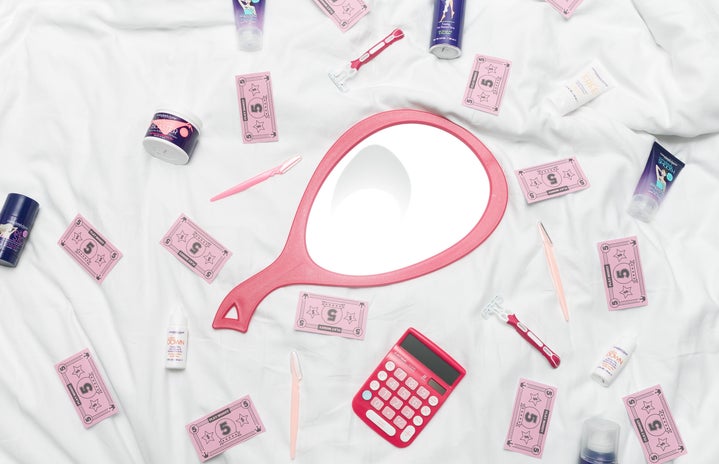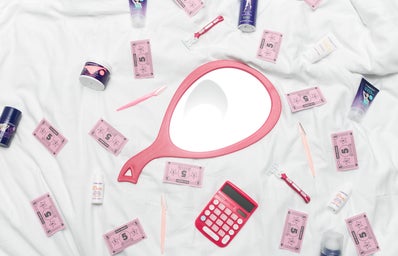Being a woman requires a lot. You learn at an early age that the scales are already not in your favour, so you better work harder than everyone else. You need to remember to drop someone at your location whenever you are out late in the evening. The years and years of societal norms that you spend the rest of your life unlearning. As fun as it can be, being a woman can get -at least for me- exhausting sometimes. And as it happens it costs more to be a woman too.
In 2015, the New York City Department of Consumer Affairs released a study titled From Cradle to Crane: The Cost of being a Female Consumer, which compared the prices of 800 products and found that products targeted at women cost 7% more than the same product targeted at men, with the number shooting to 13% for personal care products. The study reported that “In all but five of the 35 product categories analysed, products for female consumers were priced higher than those for male consumers. Across the sample, DCA found that women’s products cost more 42 per cent of the time while men’s products cost more 18 per cent of the time.” This disparity between the price of goods meant for women and the ones meant for men is known as the Pink Tax.
The pink tax is a form of price discrimination that charges women more than men for the same kind of products. It is prevalent not just in the US, but India too. A razor marketed for men costs Rs 80 while the same razor marketed for women costs Rs 250. Society conditions women to care about their appearances more than men, making their demand less elastic, which provides an opportunity for cooperations to profit out of such notions of patriarchy, selling ‘special’ feminine products that have the same functions as the generic ones or the ones targeted towards men. Some of the products for which women end up paying more are deodorants, shampoos, conditioners, body wash, razors, shaving cream and something as basic as pain relieving medication. It even extends to toys. Products that are exclusively used by women such as tampons, menstrual cups and sanitary pads are levied with sales tax whereas other products that are deemed as necessities are given tax exemptions.
The problem gets exacerbated by the fact that there is still a huge wage gap between men and women. According to the Global Gender Gap Report 2021, by the World Economic Forum, women earn about 37 per cent less than men in similar roles. More shockingly, it revealed that based on the current trajectory, we are 267.6 years from gender parity in the area of economic participation and opportunity- which includes equal pay. So, women tend to pay more throughout their life while they earn less, which puts an undue financial burden, especially on working-class women who are already struggling to make ends meet. It has been made worse during the pandemic, with the fall in the share of women in the workforce.
However, there have been recent attempts at making the consumer experience more equitable. Monica Lennon, a Labour Member of the Scottish Parliament, who has campaigned to end period poverty since 2016, introduced a Bill for an Act of the Scottish Parliament, the Period Products (Free Provision) Bill to make provision for free period products for anyone who needs them in 2019, following which Scotland made feminine hygiene products free for all women in 2020. India and Kenya have abolished tax on tampons, with Colombia abolishing the tax on all feminine hygiene products in 2018. Feminine products in Germany had a luxury tax levied on them, which was lowered from 19 per cent to 7 per cent at the start of 2020. Christine Jardine, in 2020, raised an Early Day Motion citing the Pink Tax in the British Parliament. Jardine introduced The Gender-Based Pricing(Prohibition)Bill, highlighting that in the UK “women on average pay £200 more annually than men for the same everyday consumer goods and services and that in some cases the only difference is the colour of the item”.
This inequality in the consumer experience between men and women makes the already wide income and financial inequality worse, making it harder for women to lead a financially independent life. Therefore, taking stock of the situation and working to correct this imbalance is necessary. The first and most important step in this process is educating and spreading awareness about the issue. In most cases, women aren’t even aware of this price discrimination. Now that we have more media outlets than ever, we must employ all those efficiently. Apart from that, something that women can personally do to temporarily combat this problem is to go for the generic version of the product.
However, as with all issues of significance, it is important to deal with the disease at its roots. We need to reexamine gender roles in our broader cultural perceptions and correct our marketing tactics accordingly. It is also important to work towards income equality among all genders, which requires ensuring that more and more women pursue higher education and are in leadership roles, a number that is miserably low.
Equality is something that requires a lot of work but it is important to make sure that something as basic as buying shampoo doesn’t disadvantage one section of society against the other.

